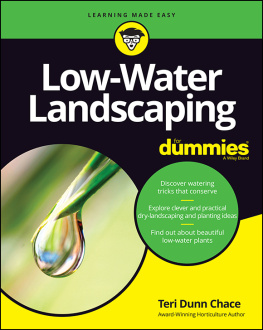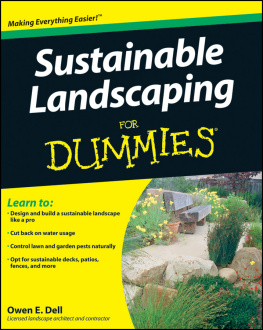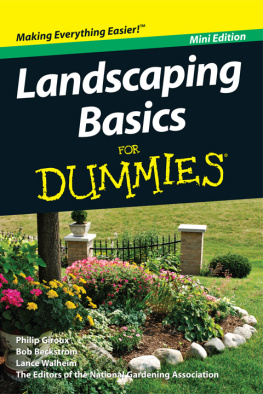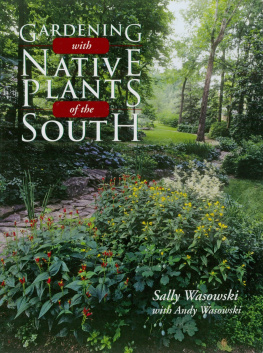Wasowski Andy - Native Texas Plants: Landscaping Region by Region
Here you can read online Wasowski Andy - Native Texas Plants: Landscaping Region by Region full text of the book (entire story) in english for free. Download pdf and epub, get meaning, cover and reviews about this ebook. City: Lanham, year: 2013;2003, publisher: Taylor Trade Publishing, genre: Home and family. Description of the work, (preface) as well as reviews are available. Best literature library LitArk.com created for fans of good reading and offers a wide selection of genres:
Romance novel
Science fiction
Adventure
Detective
Science
History
Home and family
Prose
Art
Politics
Computer
Non-fiction
Religion
Business
Children
Humor
Choose a favorite category and find really read worthwhile books. Enjoy immersion in the world of imagination, feel the emotions of the characters or learn something new for yourself, make an fascinating discovery.
- Book:Native Texas Plants: Landscaping Region by Region
- Author:
- Publisher:Taylor Trade Publishing
- Genre:
- Year:2013;2003
- City:Lanham
- Rating:4 / 5
- Favourites:Add to favourites
- Your mark:
- 80
- 1
- 2
- 3
- 4
- 5
Native Texas Plants: Landscaping Region by Region: summary, description and annotation
We offer to read an annotation, description, summary or preface (depends on what the author of the book "Native Texas Plants: Landscaping Region by Region" wrote himself). If you haven't found the necessary information about the book — write in the comments, we will try to find it.
An indispensable guide with 21 landscaping design plans for every type of terrain found in Texas.
Native Texas Plants: Landscaping Region by Region — read online for free the complete book (whole text) full work
Below is the text of the book, divided by pages. System saving the place of the last page read, allows you to conveniently read the book "Native Texas Plants: Landscaping Region by Region" online for free, without having to search again every time where you left off. Put a bookmark, and you can go to the page where you finished reading at any time.
Font size:
Interval:
Bookmark:
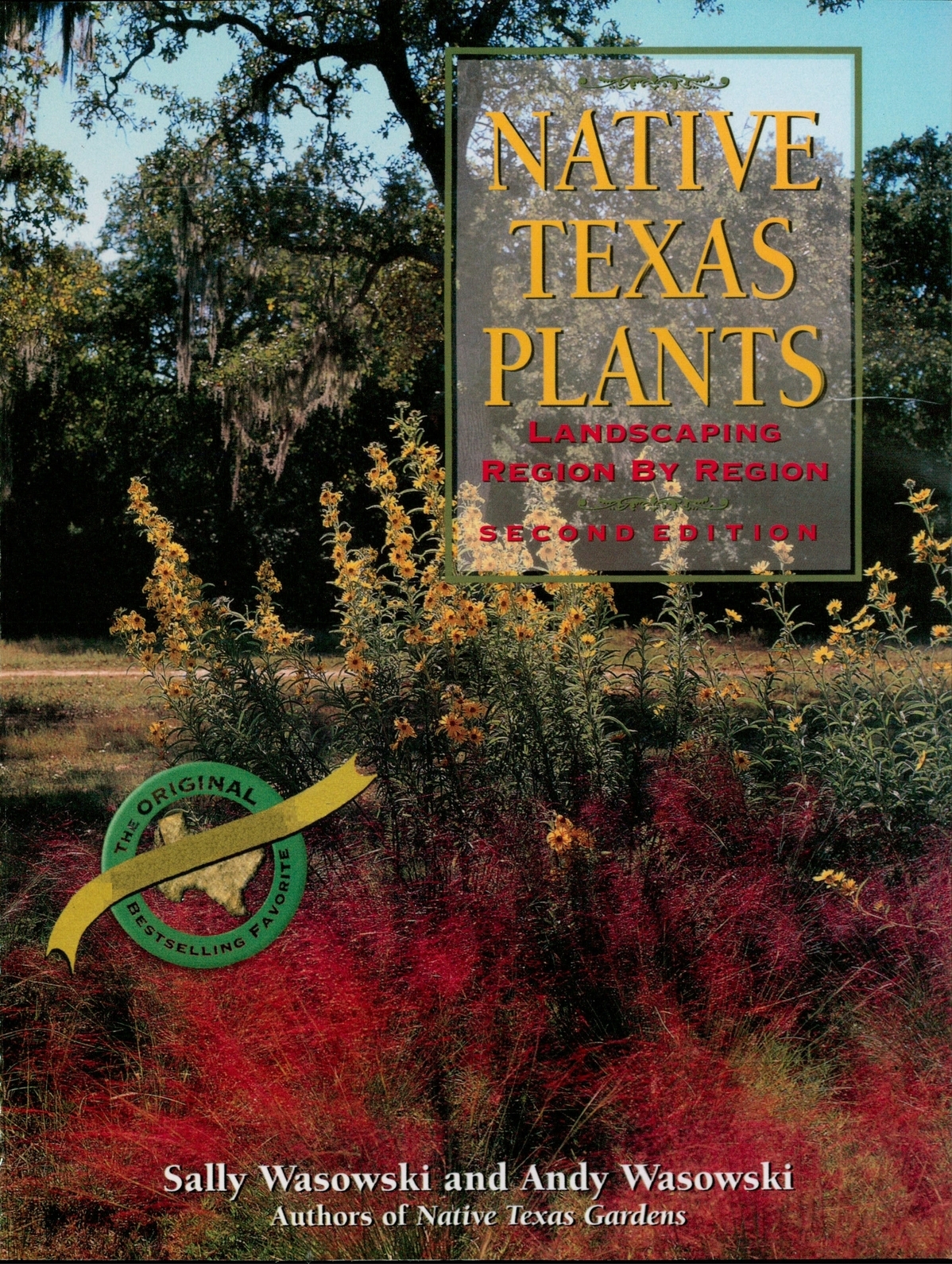
A bout midway through our work on this book, we had an unsettling experience. We made a cold-call visit at a nursery in an unfamiliar part of the state, hoping to pick up some practical hands-on information about the local native plants.
The owner of the nursery did indeed have valuable data on the region, and since business seemed slow that day, it didnt appear that our chatting would be a problem. But as my questions kept coming, her tone became more and more brittle. She began to show signs of impatience and then irritation. Finally, she suggested rather icily that instead of going around talking to people, Id be better off doing some research. I cant imagine what she thought I was doing.
Luckily, that was a unique and aberrant encounter, and I mention it only because, when I started out, I honestly feared this would be a typical response. After all, who would want to take time out of a busy day to educate me ? I had so many questions and so much to learn! I thought that, at best, people would be polite and civil and then shoo me off as soon as they could. If that had been the case, this book could not have been written.
As it turned out, everywhere Andy and I traveled we met with greater warmth and cooperation than we could have hoped for. We were continually amazed by the generosity shown us, not only in terms of information and access to slide collections but also in that most valuable commodity of alltime. Often our regional contacts would devote an entire workday to helping us in our research. Later, during the sorting-out periods back home and during the actual writing, they were always ready to accept a frantic phone call or respond with detailed letters explaining some fine point on propagation or whatever. Some of these people welcomed us into their homes and allowed us to photograph their gardens. Some provided escort service to unfamiliar parts of the state and introductions to people who might have what we needed. Not once did we detect a note of impatience or disinterest from any of them.
Why were they so helpful? One reason is that they love our Texas native plants. They want native plants to gain greater acceptance and appreciation, and we represented a means to that worthy end. But mostly they helped because, quite simply, thats the kind of people they are. Acknowledging them here is paltry repayment for all their many kindnesses.
Our thanks to Geyata Ajilvsgi, Olivette Beach, Edith Bettinger, Gene Blacklock, W. D. Bransford, Mary Buchanan, Fred Buxton, Marie Caillet, Logan Calhoun, C. W. Carpenter, Judy Black Childress, Wayne Clark, Marvin and Betty Colwill, Paul Cox, Gerald and Rosalie Cyrier, Dallas Museum of Natural History, Walt Davis, David Diamond, James Dick, Stephen K. Domigan, Ted Doremus, Anna Jane Duree, Jim Everitt, Katie Ferguson, Rosa and Charles Finsley, George J. Fix, Jr., Will Fleming, Manuel Flores, Gary Freeborg, Skip Fulton, Robert Gallagher, Linda Gardner, Sue Gardner, Ron Gass, Lorine and David Gibson, Don and Benita Giller, John Gleason, Heard Natural Science Museum, Mike Heep, Martha Henschen, Dan Hinds, Mary Grace Horlock, Agnes Hubbard, Phil Huey, Fred Jones, Margaret Jones, Ed and Margaret Kennedy, Richard Kirkham, John M. Koros, Tom Kramer, Dr. Harold Laughlin, Eric Lautzenheiser, Patty Leslie, Dr. Robert Lonard, Lynn Lowrey, Norma Maddox, Tom Madison, T. J. Marks, Dorothy Mattiza, Norman Maxwell, Janeen McDermott, Lisa McNelis, Denny Miller, Laura Miller, James Stewart Minton, National Wildflower Research Center, Rolf and Anita Nelson, Charlotte Nichols, Jill Nokes, David Northington, Ruth OBrien, Mary and Carl Owens, Michael Parkey, Michael Passarello, Annie Paulson, Don Perkins, Art Petley, Barbara Pettijohn, Adele Pieper, Bob and Dede Plank, Jack Price, Ray Pulaski, Dayton Reuter, Jim and Chris Ridley, David Riskind, Dr. Chester Rowell, Steve R. Runnells, Santa Ana National Wildlife Refuge, Michael Shoup, Linda Smith, Shannon Smith, Mrs. W. Truett Smith, Dr. Geoffrey Stanford, Alice Staub, Marilyn Stidham, Wash Storm, Harold Stroud, Glenn and Connie Suhren, Dora Sylvester, Kathy Thieleman, John Thomas, Bryan Thompson, Dr. Jimmy L. Tipton, James Turner, Kay Warmerdam, Dr. Barton H. Warnock, Vernon L. and Marie Wesby, John White, Burr Williams, Doug Williams, Tom Wooten. And, of course, Benny J. Simpson, to whom this book is dedicated.
Special thanks to David Nickel, who did such a wonderful job drawing up my plans for this book (as well as the first one). Im especially grateful to Ron Nelson, friend and architect, who not only gave me valuable advice but also gave me a quiet refuge away from phones and family where I could complete the plans.
On a more personal note, love and thanks go to those who became substitute parents for our daughter, Melissa, during our many trips away from home. My mother, Sara Hudson, assumed the lionesss share. But also were grateful to Stephanie Barron Ertel and her daughters, Valerie and Kathleen, and Mary Jane Dietz and her daughter, Stess, for being there for Melissa and for us. And thanks to our neighbors Horace Longino and David Jett for providing a home away from home for our cats so they wouldnt have to be boarded at the vets.
On the road, we were saved numerous times from motel beds by the hospitality of friends and relatives: cousin Raymond Baber and her husband Gary, Sheila Taylor and Walter Kennedy, Jacque and Don Stowers, John Park and Leslie Moore, Genie and Chuck Lindberg, Dody and Bill Spencer, Jill Nokes, Mrs. Una Simpson, Leo and Ida Sims, and, on our trip to Arizona to gather data on desert plants, Andys folks, Sophie and Frank Roginski.
For this second edition, many thanks to Benny Simpson, as always, for his time and patience in helping us with everything. Also, thanks to Wynn Anderson for his expertise in Chihuahuan Desert perennials, to John Snowdon for help with the grasses, and to Dorothy Mattiza for sharing her experiences, observations, slides, and for touring us around two ranches and the South Texas coast.
Special thanks go to Dr. Marshall Johnson for helping choose which Latin names to follow when there were sometimes as many as three legitimate ones to choose from. Our goal is always to give you, the reader, a Latin name that matches the other published references you are most likely to be using. But recently Latin names seem to be changing at an alarming rate. Since the first edition, some species have been switched from one family to another and often back again. Others have been lumped or split and then lumped or split again. Research in dusty files has shown older Latin names that have precedence. I needed an expert to advise which names are truly changed and which changes will prove ephemeral. Dr. Johnston undertook to give that guidance, and for that we are truly grateful.
We would also like to thank the many wonderful clients who have actually paid me to explore their properties. And our last thanks goes to those many people we have met at conferences and in our travels who have shared their native gardening experiences with us. Without them, this new edition would be much less rich and complete.
Want to have nightmares? Write a book and then wonder if somehow you inadvertently left out a very important name in the acknowledgments. If that did indeed happen, please blame it on human fallibility in the face of a rapidly approaching deadline, forgive us, and know that it in no way diminishes our heartfelt gratitude and love.

Font size:
Interval:
Bookmark:
Similar books «Native Texas Plants: Landscaping Region by Region»
Look at similar books to Native Texas Plants: Landscaping Region by Region. We have selected literature similar in name and meaning in the hope of providing readers with more options to find new, interesting, not yet read works.
Discussion, reviews of the book Native Texas Plants: Landscaping Region by Region and just readers' own opinions. Leave your comments, write what you think about the work, its meaning or the main characters. Specify what exactly you liked and what you didn't like, and why you think so.


